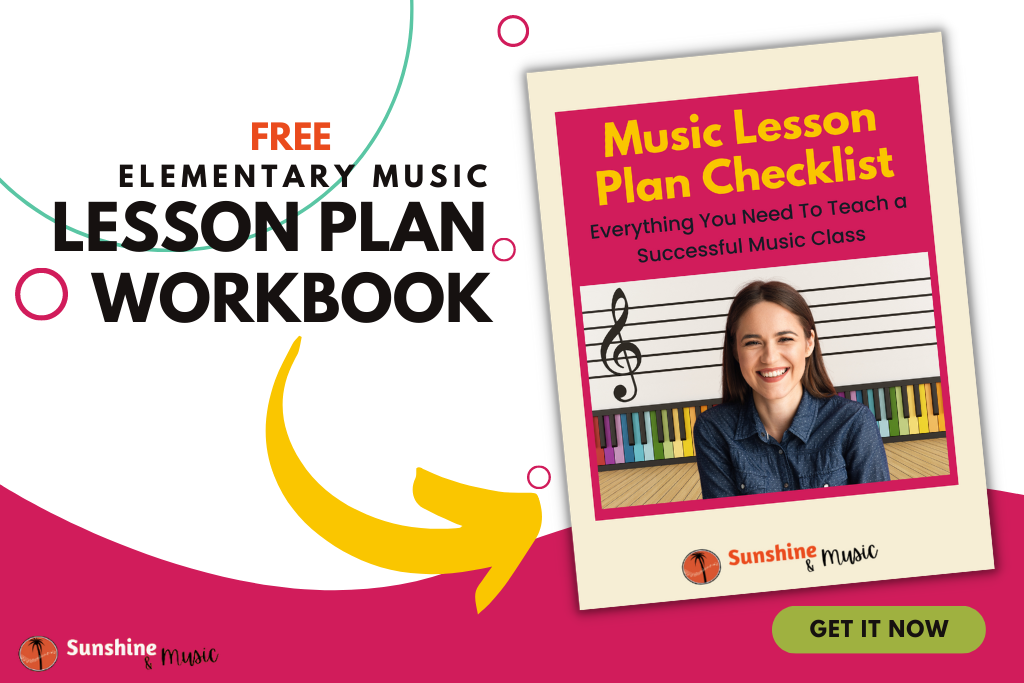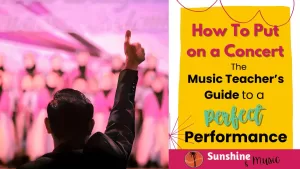Is your cursor blinking as you stare at the prompt “Objectives for Lesson Plan …”? What exactly are you teaching each lesson, and WHY? If you struggle to explain the main point of your lessons each week, don’t worry. Today I am going to tell you how you can plan out your whole quarter – or even your whole year – in the three simple steps, with clarity on what your goals and objectives are each step of the way.
Now if you are in a real crunch, you might opt for something like my Instruments of the Orchestra pre-made lesson plans.
If you are more of a do-it-yourselfer, then I’ve got you covered too. These three steps will streamline your planning process.
Step One: Focus on Objectives for Lesson Plan

I usually pick about 2 main things to focus on for each unit. These come from the state music standards. You can learn more about state music standards here for a good jumping off point.
National Standards in Music: A State by State Breakdown
For example, maybe we are doing a unit on Dr. Martin Luther King Jr., during which we will focus on reading and writing half notes and whole notes, as well as learning vocabulary (forte, piano and tempo). These will be the objectives for your daily lesson plan.
Kids really need to practice those skills and new terminology before they feel comfortable with in, so I try to stay pretty focused on those things, with any other stuff being review or subtle introductions to things we will focus on later.
This also forms the basis of what things I will be grading them on. So if we go back to my MLK Jr. unit, at the end of the unit I might assess them on creating a rhythm that uses half and whole notes, and do a quiz to see if they can correctly define our vocabulary words. I mark out when and what I will assess, so I can make sure kids have plenty of time and practice for mastery.
Step Two: Add in the Fun!

I keep a folder with handouts from workshops with fun lessons I want to try. If I can’t fit them in to my current year, I hold on to them for when I start planning my next year. I make sure to make notes in the hand-outs as I receive them, noting what grade level I think they would work well with as well as what skills they address.
Then, I pull out the pile and find things I love and stick them into my plans – even if they are plans for April or December. I save space for them in advance because the FUN stuff is where a lot of the learning happens. *side note: make sure the activity isn’t just fun for fun’s sake. It should tie in with content. Fun for fun’s sake is filler. We will get to that later*
Step Three: Fill in the rest
Once I’ve put in new fun activities, I look back on the previous year and add back in stuff that was successful in the past. If I feel like my content is covered, I may also use extra lesson time to review concepts we have already learned, or throw in something just for fun, like a cute turkey dance at Thanksgiving or something.
Those are the couple of steps that I use every year to start prepping my lessons ahead of time. I like having the peace of mind that my lessons are prepped far in advance, since I know planning is at a premium during the year.
FREE Lesson Plan Workbook
If you want to get some insight into what types of things should be in your lesson plans, plus a free workbook to help you get all your ideas organized, head over to my blog post: Lesson Plans for Elementary Music: 10 Crucial Things You’ve Been Forgetting.

Have a year! Teach on, my friends!







6 Responses